Cairo, Egypt’s capital is a megacity where first-time travelers love to visit because of its rich historic finery. In this article, we shall be exploring the top 20 attractions in Cairo.
Top 20 Attractions in Cairo, Egypt
Cairo is the destination for many travelers going to Egypt for the first time. It is a bustling city that travelers hate and love in equal measures. With the traffic, pollution, and sheer noise, navigating Egypt’s capital can be a problem if it is your first-time visit.
However, this timeless city has so much to offer that it will make you look beyond its problems. The Egyptian street life is full of vigor, and there is no better place to get a feel of it other than Cairo.
Many travelers visit Cairo just to see the Pyramids of Giza, the last of the ancient’s world seven wonders – this is understandable. This attraction is right at the doorstep of the city. However, there are many more attractions and major monuments in the city other than the Pyramids of Giza that have been there for centuries.
Cairo is also home to medieval mosques, roman ruins, and pharaoh’s treasures. To help you plan your time when you visit this city that is a fusion of ancient and infinite treasures, here is a list of the top 20 attractions around.
The Pyramids of Giza

The Pyramid of Giza, for many people, is one of the most top 20 Attractions in Cairo specially in Egypt. It is the last ancient wonder of the world that is still intact. It is also one of the world’s most recognizable sites. Your visit to Cairo will not be complete if you do not visit this site.
The Pyramid of Giza is located outside the city, right on the edge. This iconic landmark is on the Giza plateau, on the windswept desert. The major highlight of this wonder is the fourth dynasty funerary temples inside.
One of the iconic monuments of the ancient world, the pharaoh faced and lion-bodied Sphinx guard these mortuary temples. The pyramids in the Giza group include the Pyramid of Cheops (the largest), Pyramid of Chephren, and Pyramid of Mycerinus (the smaller).
Regardless of the tourist hustle, the dust, and the heat, a visit to Egypt’s number one tourist destination is a must. It is a half-day trip to the pyramids with camel-riding.
Grand Egyptian Museum
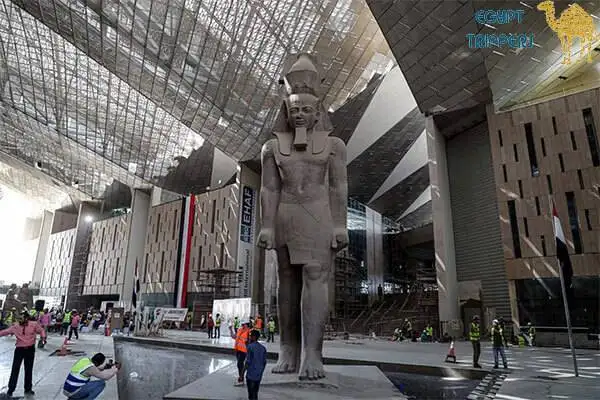
One of the most top 20 Attractions in Cairo, The Grand Egyptian Museum is scheduled to open late in 2021. Treasures from the Egyptian Museum, Midan al-Tahrir, Downtown Cairo will be relocated to the Grand Egyptian Museum on the Giza plateau.
The Egyptian Museum called the Museum of Egyptian Antiquities is home to the largest Pharaonic Antiquities in the world. Many consider it as one of the finest attractions in Cairo to visit.
The Egyptian Museum is a remarkable building that houses the world’s widest collection of ancient Egypt. The museum highlights Tutankhamen’s tomb, the Royal Mummies’ room, and a series of mind-blowing jewelry, gold trinkets, statues, and complex gold coffins.
This staggering collection makes it one of the greatest museums in the world. Although the artifact will soon be moved to the Grand Egyptian Museum in Giza, some of the museum’s Royal Mummies Collection has since been transferred to the National Museum of Egyptian Civilizations in April 2020.
Al-Azhar Mosque
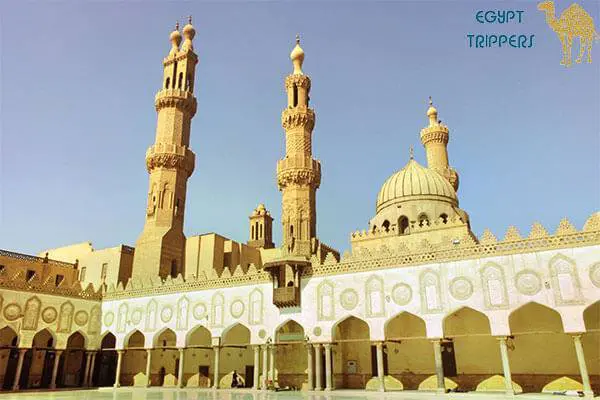
The Al-Azhar Mosque is situated at Al-Azhar Street right at the heart of the Islamic Cairo District. Completed in AD 972, it is one of Cairo’s earliest surviving mosques. It is also the finest building of the city’s Fatimid era.
In AD 988, it was bestowed with the status of a university by Caliph El-Aziz, making it one of the oldest universities in the world. Al-Azhar University today is still considered the world-leading Islamic Theological Center.
The mosque’s building is capped with five minarets. You can get the best view of these minarets right from the central courtyard. Al-Azhar Street right is located from the square where the mosque sits to the downtown area of Midan-Ataba.
A 3000 square meters main prayer hall is just across the courtyard. Its location makes it easy to reach by taxi.
Coptic Cairo
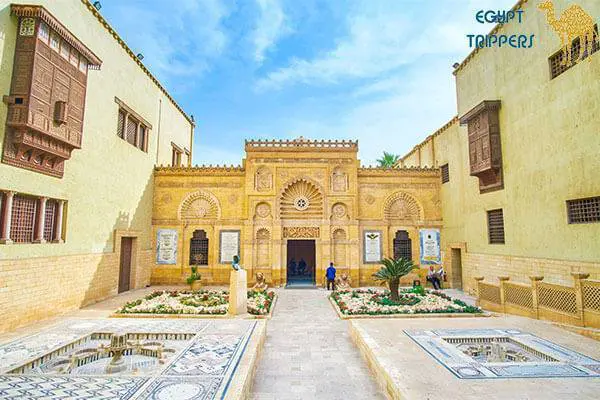
You can explore Coptic history in Coptic Cairo (Old Cairo). Located in Sharia Mar Girgis, south of Downtown, Coptic Cairo is a place within the city where you can discover Cairo’s best cultural, architectural, and historic offerings.
The streets of Coptic Cairo are parked with sculptures, paintings, and artistic works. Coptic Cairo used to boast of unique Islamic heritage and was a Christian community stronghold in Egypt.
You will find a Coptic Museum that contains vast information about the Christian period and Coptic art collections from ancient Egypt. Next to the museum is the 9th century hanging church with some amazing samples of Coptic architecture.
The church was founded in the 4th century. It was built originally over the roman gate tower but was rebuilt in the 9th century. The Church of St. Sergius and Bacchus is the highlight for many Christians that choose to visit this district.
Local legend has it that it is where baby Jesus, Virgin Mary, and the family were sheltered when male babies were being massacred by King Herod.
Saqqara & Dahshur
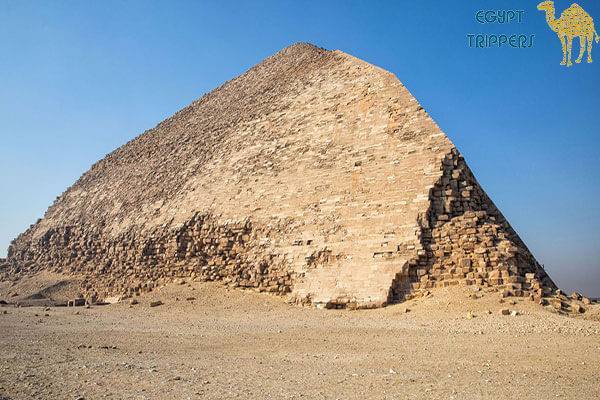
Saqqara is a vast tract of land used for burials, and Dahshur the nearby site is home to Cairo’s “other pyramids.” It is a site that is located 30 kilometers to the south of Cairo.
The experience you will have when you go on a day’s trip to Saqqara & Dahshur is as rewarding as that which the Pyramids of Giza offer. The most popular attraction for tourists in Saqqara is the Step Pyramid.
However, it is also worth spending time exploring the entire area which is parked with beautifully painted tombs. Saqqara’s vast land and its history as a necropolis make it an area that is still been excavated.
New findings making the news worldwide are being unearthed in this area. You should also not miss Dahshur’s bent pyramid and red pyramid just down the road. A trip around this place will take you just half a day.
National Museum of Egyptian Civilizations (NMEC)
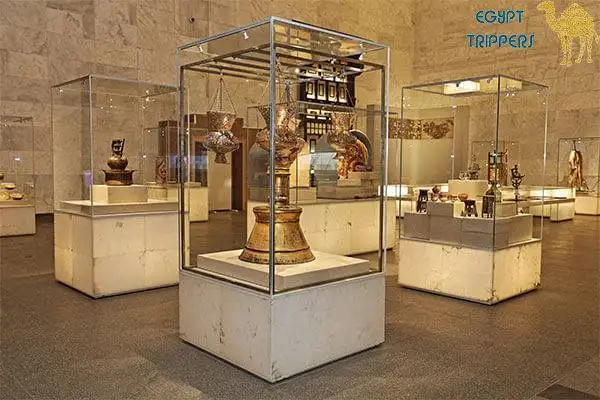
Situated in Al Fustat Street, Cairo, the National Museum of Egyptian Civilizations is home to the entire human history of Egypt. Unlike many of the exhibits in Cairo’s other museums, the NMEC is dedicated to telling the story of Egypt’s civilization.
The museum has been gradually building up its exhibits since it was partially opened in 2017. The star attraction is the Royal Mummies Collection which has made the NMEC its permanent home since April 2020 when it was moved from the Egyptian Museum.
Now home to the most famous Pharaonic mummies in Egypt, the NMEC is a place you must visit even though its collection is not yet complete. The familiar mummies among the 22 displayed in the Royal Mummies Gallery include Seti I and II, Amenhotep I, Hatshepsut, and Ramses II and III.
The museum has proximity to Coptic Cairo for which you can enjoy a short taxi ride or three-kilometer walk to Coptic Cairo’s Churches, this makes it one of the best Attractions in Cairo.
Khan El-Khalili

Khan El-Khalili is a vibrant open-air market located off Al-Azhar Street in the Islamic Cairo District. Considered to be one of the best markets in Cairo, Khan El-Khalili is widely known for its precious and semiprecious jewelry.
Locally woven textiles, beautiful metal lampshades, and trinkets of every price and color can be found in this place. Khan El-Khalili is a place where you will be glad to visit to pick Egyptian traditional products. This market was originally built for the Fatimid caliphs as a mausoleum.
However, the structure changed over time until it was remodeled by Sultan al-Ghuri in the 16th century. Khan El-Khalili now looks more like a Turkish bazaar. While visiting Khan El-Khalili, it is advised that you do not go with kids in a towage.
Although children are technically allowed in the bazaar, it gets crowded and busy that makes it likely that you lose the tow.
Salah El-Din Citadel
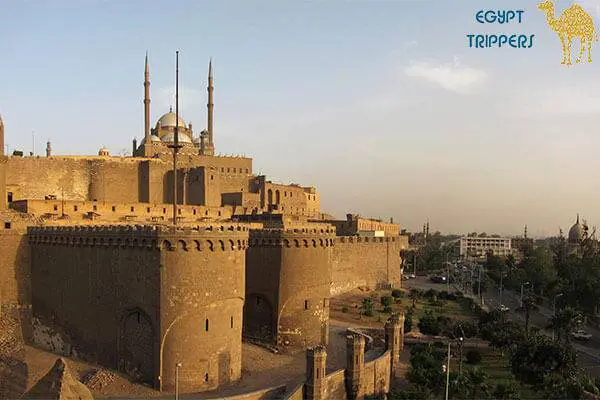
Salah El-Din Citadel is strategically positioned on the Mokattam Hills central Cairo. The Citadel is a place that you must see if you have decided to visit Mokattam Hills. It was the seat of the Egyptian government from the 13th to the 19th century.
It became a UNESCO World Heritage Site in 1976. An Islamic fortress dating back to the Middle Ages, the Citadel can be seen from almost anywhere in Cairo because it is prominently located on the Mokattam Hills. Completed in 1857, the Mosque of Muhammad Ali is the most famous attraction in the Citadel.
It stands in memory of Muhammad Ali’s first son, Tusun Pasha. It is nicknamed the “Alabaster Mosque,” with its tall disproportionately slender minarets and white stone making it one of the great landmarks in Cairo.
Sultan Hassan Mosque
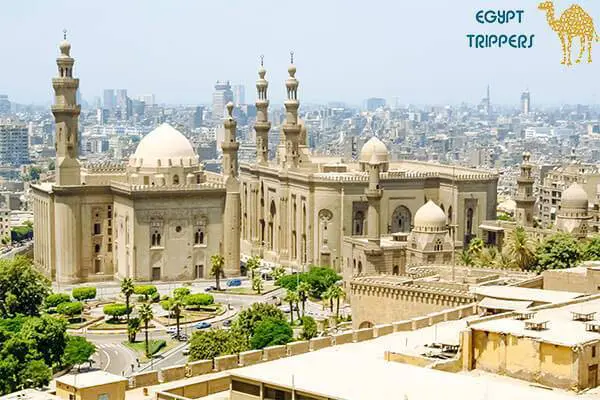
The Sultan Hassan Mosque is one or the Attractions in Cairo, located in the popular Midan Salah-ad-Din, Islamic Cairo District. The mosque is regarded as one of the world’s finest descriptions of Mamluk architecture.
An Islamic artistry vision, its intricate and detailing arabesque features give the Sultan Hassan Mosque an abundance of stalactites. It was built for Sultan Hassan el-Nasir in the years between 1356 and 1363.
It has a massive 26 meters high doorway at the north corner. It also has an 81.5 meters tall minaret at the south corner, making it Cairo’s tallest. The El-Rifai Mosque faces the Sultan Hassan Mosque directly.
The El-Rifai Mosque was built in 1912 to provide housing for Khedive Ismail’s tomb. Also buried here is Mohammed Reza Pahlavi (1919-1980), the ex-Shah of Iran. It was constructed to replicate the Sultan Hassan Mosque. Both mosques sit conspicuously on Midan Salah Ad-Din.
Museum of Islamic Art
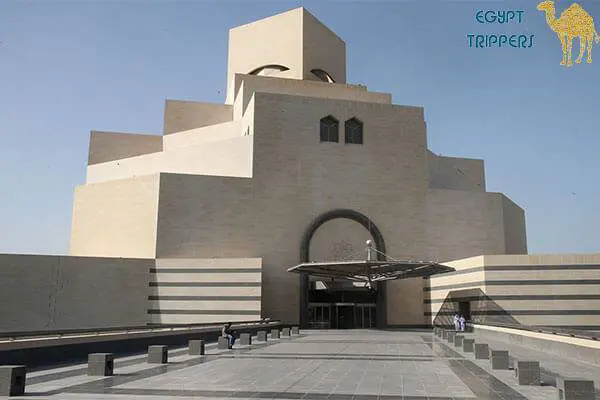
The Museum of Islamic Art located in Midan Bab Al Khalq, Islamic Cairo District is one of the world’s Middle Eastern artistries holding important collections. This museum sustained severe damage in 2014 after a car bomb attack. However, its doors are open to the public now.
Among the items on display in the museum are jewel-toned carpet, carved-marble tombstones, frescoes, Ayyubid ceramics, and Ottoman tile work. You can also spend some time checking the detail of the illuminated Qurans and the richly decorative metal-ware, glassware, and ceramics on display.
You can also find a heavy collection of ornate jewelry and rooms set aside for Astronomy. In the rooms are equipment like the highly detailed astrolabes meant for Astronomy and other sciences. This attraction is filled with a wealth of Islamic heritage, and it is a walking distance of another attraction, Bab Zuweila.
Bab Zuweila

Bab Zuweila, a medieval-era relic gets the most attention of all the gates in the Islamic Cairo District. Standing on Al-Muiz li-Din Allah Street, Islamic Cairo District, you can have an amazing view of Islamic Cairo when you climb to the top of Bab Zuweila.
There are two minarets on the gates and it is the old town’s last southern gate still standing. Next door is Sheikh al-Mu’ayyad Mosque with red-and-white stonework.
Taking a few steps away is the Street of the Tentmakers with its fascinating stalls. Egypt’s bright fabrics are being sold in bulk in these stalls at Bab Zuweila.
Al-Muizz li-Din Allah Street

If you are looking for the oldest street in Cairo, here it is, and regarded as one of the most top 20 Attractions in Cairo, Al-Muizz li-Din Allah Street, Islamic Cairo District. It is a very important street running north-south all through Islamic Cairo. On this street, you will find some of the most important monuments of Cairo’s past.
Mamluk buildings are finely rimmed in the northern section of this street. One of such buildings is the Madrassa of as-Salih Ayyub. Constructed in AD 1247, the Madrassa of as-Salih Ayyub showcases Islamic architecture’s tranquil simplicity.
An extremely beautiful Madrassa of Qalaun is direct across the road from the Madrassa. Considered as one of the greatest architectural triumphs of the Mamluk period, the Madrassa of Qalaun on its opening served as a hospital.
Mosque of Ibn Tulun

Unlike the other religious buildings and mosques in Cairo, you do not have to pay before entering the Mosque of Ibn Tulun. Located at Al-Saliba Street, this mosque was built in AD 876. This Cairo’s second oldest mosque that is still standing is very huge and has a fortress-like look.
It was modeled on Saudi Arabia’s Kaaba in Mecca. It was the largest mosque at the time it was constructed. The main prayer hall is at the Main Court’s southern side. There are remnants of its older decoration of carved wood and stucco.
The remnants of its first gold mosaic decoration are still in the Mihrab. Although you do not need to be religious before you can visit the Mosque of Ibn Tulun, you still need to dress appropriately.
Al-Azhar Park

Al-Azhar Park, Salah Salem Street is the greenest urban attraction in Cairo. Originally, this gated park was a landfill. The 49th Imam of Nizari Ismailism, Agha Khan IV under his initiative had the landfill transformed into a park in 2005.
The Park is bordered by Ayyubid Dynasty a 12th century wall. Almost everything about the park’s gardens including the prominent walkways and waterways follows traditional Islamic architecture. Visiting Al-Azhar Park is easier when you take a taxi ride.
However, you can still walk to the lower park entrance it isn’t too hot and you are at Islamic Cairo District already. From Bab Zyweila, just turn east onto Darb al-Ahmar Street and you will be at the lower park entrance in no time.
Zamalek

One of the Attractions in Cairo, Zamalek sits in the middle of the Gezira island on the Nile River. Embassies from around the world are housed here. Having elegant houses dotted around the area, Zamalek has something to offer everybody.
As part of Cairo’s landscape, you will find fancy boutiques and stores as well as large number of modern-day galleries to explore. It is also the top dining destination in Cairo. Mahmoud Mukhtar Museum, a museum that holds a small collection of some sculptor works by the famous Mahmoud Mukhtar is just opposite Cairo Opera House in Zamalek.
Mosque of Al-Hakim
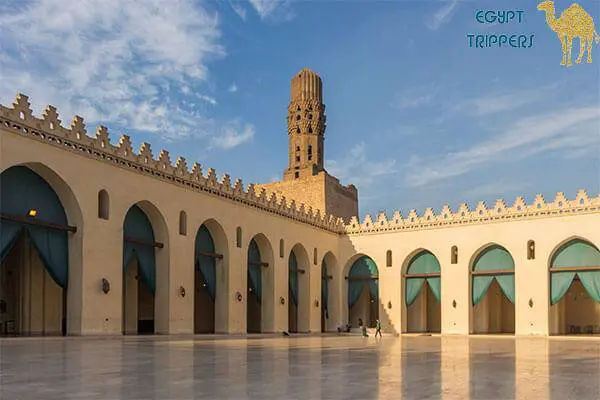
The Mosque of Al-Hakim is named after Caliph Al-Hakim, one of Egypt’s most fascinating rulers. Located in Al-Galal Street, Islamic Cairo District and built in AD 1013, this mosque served as a psychiatric hospital, Crusader fortress, and Madrassa over the centuries.
It was until the 1980s that it was completely restored. Its most interesting architectural constituents are the minarets. The minarets were originally round. Their current domed top sections and square casing go way back to their restoration after the 1303 earthquake in Cairo.
The mosque sits between Bab el-Nasr (Gate of Victory) and Bab el-Futuh (Gate of Conquests). Going all the way north of the Al-Mu’izz li-Din Allah Street, you can walk between the Mosque of Al-Hakim and the Al-Azhar Mosque.
Nilometer
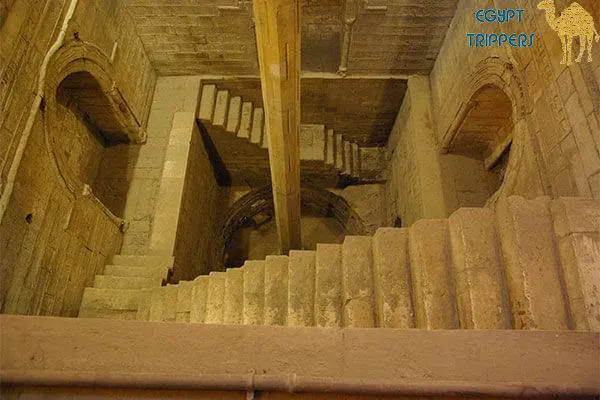
Cairo’s Nilometer is located inside the gardens of the Monastirli Palace. The Monastirli Palace south of Gezira Island was once upon a time an Ottoman pasha’s residence. Built in AD 861, the Nilometer was used to predict the annual flood heights of the Nile.
It was also used to measure Nile’s ebb and flow. The small Umm Khalthum Museum is also on the grounds of the palace. The museum celebrates the life of Umm Khalthum (AD 1898-1975), Egypt’s famed diva.
She is the beloved songstress of the Arab world, with her music still being blasted on the stereo of almost every taxi and Cairo’s traditional coffeehouses. Outside the palace, south of Gezira Island are the streets of Roda Island with its early 20th century dilapidated architecture. It is fun roaming about the streets.
Manyal Palace
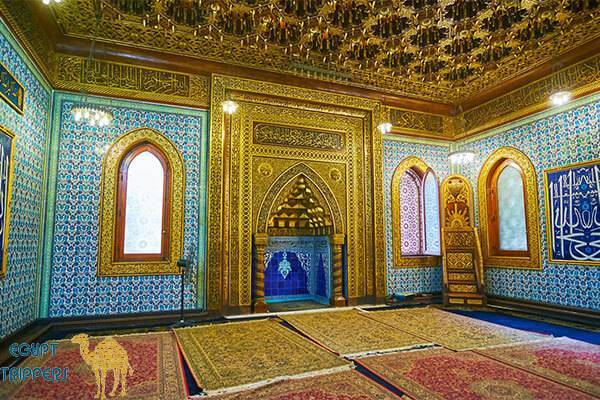
Manyal Palace is situated at the north end of Roda Island. On the shore of the island are lush green gardens within which the Manyal Palace is set. The architecture of the palace displays a conspicuous riot of styles combining influences from both palatial European and traditional Arabic designs.
The result of this combination is a lavish and over-the-top harmonized interior. In the palace are the Residence Palace with its oil paintings, Ottoman-style tile work, and Rococo flourishes. Reception Palace has elaborate ceiling that was used to host visitors.
However, the real highlight here is the gold-decked Throne Palace. The uncle of King Farouk built this complex in the early 20th century.
Ancient El-Matariya and Heliopolis

Ancient Heliopolis used to be one of the top 20 Attractions in Cairo and the Egyptian town of Yuno. Although there is a Cairo suburb with the same name, it is not the same. Heliopolis as it is known in the Greek period. It is one of Egypt’s oldest cities.
It used to be the spiritual center of the whole country since the time of the Old Kingdom. Also dating from the New and Middle Kingdoms is the Necropolis of Heliopolis which is about five kilometers east of the obelisk. Also close to Heliopolis is El-Matariya Church with the “Virgin’s Tree” some 13 kilometers northeast from central Cairo.
Local legend has it that an older tree was replaced by planting this sycamore tree in AD 1672. Infant Jesus and Virgin Mary were believed to have rested under the so-called older tree during their escape into Egypt.
Downtown Cairo

Cairo was nicknamed the “Paris of the East” in the 19th century. The city’s downtown districts still carry the sense of that century. You will notice this as you stroll around with your gaze not at the street level bedlam but on the architecture blackened with car exhaust.
The entire area was packed full of crumbling Belle Époque buildings. These buildings when firstly constructed must have had a staggeringly glamorous look. Around Midan Talaat Harb you will find some of its best remnants.
There is also a 19th century Abdin Palace on Al-Gumhuriya Street on the Downtown’ western edge. Abdin Palace was at a time home to the last khedives of Egypt. Navigating Downtown Cairo is quite easy if you want to get around the traffic when crossing the road.
To Wrap Up
Cairo, Egypt is a place where you can find whatever experience you are looking for. It is a remarkable city where you can learn more about ancient Egypt. A visit to any of the top 20 attractions in Cairo will leave you amazed.

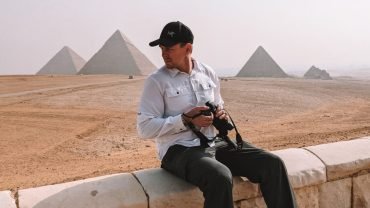
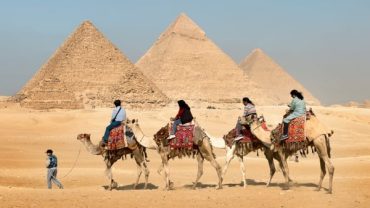
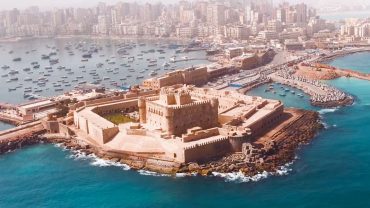
Comment (0)